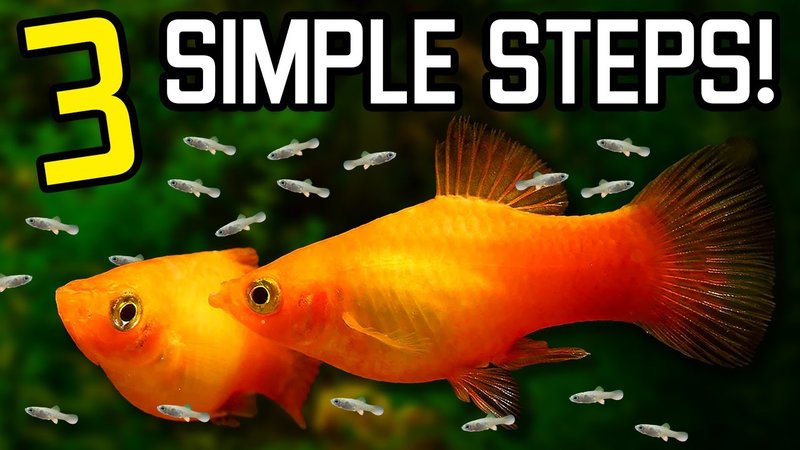
So, if you’re ready to dive into the world of platy breeding, grab a cup of coffee and let’s chat about how to create the perfect conditions for your fish to multiply. You might be wondering what you need to do first or if it’s complicated—don’t worry! It’s simpler than it sounds, and I’ll walk you through it step by step.
Understanding Platies: The Basics
Platies are a type of freshwater fish that belong to the Xiphophorus family. They’re known for their vibrant colors and friendly demeanor, making them ideal for community tanks. Their small size, usually around 2 to 4 inches, means they don’t require a ton of space. Plus, they’re livebearers, which means they give birth to free-swimming young instead of laying eggs. This is a fantastic trait if you’re looking to breed them, as you won’t need complicated setups for hatching eggs.
Here’s the thing: because platies are livebearers, breeding them is often as simple as providing the right conditions and letting nature take its course. They’ll do most of the work themselves. However, successful breeding involves understanding their needs, including tank conditions, diet, and social structure.
Setting Up the Perfect Breeding Environment
Creating a “breeding ground” for your platies doesn’t have to be complicated. Start with a tank that’s at least 10 gallons. This gives the fish space to swim freely, which is essential during the breeding process. Make sure to include plenty of plants and hiding spots; these can be real lifesavers for the fry (baby fish) once they’re born.
Key elements to consider:
- Water Quality: Maintain clean, warm water (around 75-80°F) with a pH level between 6.8 and 8.5.
- Filtration: A good filter helps keep the water clean but avoid strong currents that may stress the fish.
- Lighting: Consistent lighting helps maintain a healthy environment, mimicking their natural habitat.
Don’t forget to cycle your tank before introducing your platies. This process allows beneficial bacteria to establish, which keeps the water healthy for your fish.
Selecting Your Breeding Pairs
Now that your tank is ready, it’s time to choose your breeding pairs. You might want to consider having one male for every two or three females. This ratio helps reduce stress among the females, who can be overwhelmed if there are too many males vying for attention.
When selecting platies, look for vibrant colors and healthy fins. A good breeding pair will be matured—around 3 to 6 months old. If you’re not sure about the males and females, here’s a quick tip: male platies have a distinct “gonopodium,” a modified fin that looks different from the female’s rounded fins.
Also, it might be helpful to keep records of your fish’s lineage. Knowing the traits of potential fry can help you predict which colors or patterns may emerge.
Feeding Your Platies for Optimal Breeding
Diet plays a crucial role in the breeding success of your platies. A balanced diet will not only keep your fish healthy but also promote breeding behavior. You should provide a mix of high-quality flake food, along with live or frozen foods like brine shrimp or bloodworms. This helps mimic their natural diet and encourages them to breed.
You can also consider adding some plant matter to the diet. Soft veggies like blanched zucchini or spinach can be a great addition. During breeding, feed your platies two to three times a day, but only give them what they can eat in a few minutes. Overfeeding can lead to poor water quality.
If your platies are healthy and well-fed, they’re more likely to breed successfully.
Breeding Behavior and What to Expect
Once your platy pair is comfortable in their environment, you’ll likely start to notice some interesting behavior. Males will often chase females, showing off their colors and trying to impress them. It’s quite the spectacle! When a female is receptive, she’ll allow the male to mate.
After successful mating, you can expect the female to give birth in about 4 to 6 weeks. Typically, she’ll produce about 20 to 50 fry at a time. However, if conditions are ideal, she can have up to 100! It’s a good idea to prepare a separate breeding tank or use a breeding box in the main tank so that the fry have a safe place to grow without being eaten by the adults.
Caring for Fry After Birth
Once the fry are born, it’s essential to provide them with the right care. They’re very tiny and vulnerable, so having a separate space is crucial. Make sure the water in their new home is the same quality as the main tank. You can feed fry specially formulated fry food or finely crushed flake food designed for baby fish.
You might find that the fry are timid, so include some plants or decorations in their tank to give them hiding spots. Keep a close eye on their growth, and remember to do regular water changes to keep the environment clean.
As the fry grow, you can start separating them based on size, as larger fry may start to eat the smaller ones.
Common Challenges in Breeding Platies
Even though breeding platies is generally straightforward, there are some common challenges you might encounter. One of the biggest issues is stress among the fish. If your platy is overly stressed, it might not breed. This can happen due to overcrowding or poor water conditions. Remember that happy fish are more likely to breed!
Another concern is the health of the fry. Sometimes, they may not survive due to poor water quality or lack of food. Make sure to monitor the tank conditions closely. You might also find that certain fry might not develop the same vibrant colors as their parents. This is completely normal and can be attributed to genetics.
Lastly, if you notice any signs of disease in your fish, such as unusual swimming behavior or discoloration, it’s best to act quickly. Isolate any sick fish and treat them accordingly, ensuring the health of the rest of your tank.
Breeding platies at home can be a fascinating journey. From setting up the right environment to caring for the fry, each step brings unique joys and challenges. Just like any hobby, it requires patience, observation, and a willingness to learn.
As you embark on this adventure, remember to enjoy the process! Watching your platies thrive and multiply is a rewarding experience that can bring joy to anyone. So, grab your gear and get started—it’s time to create your little underwater world filled with colorful platies!

